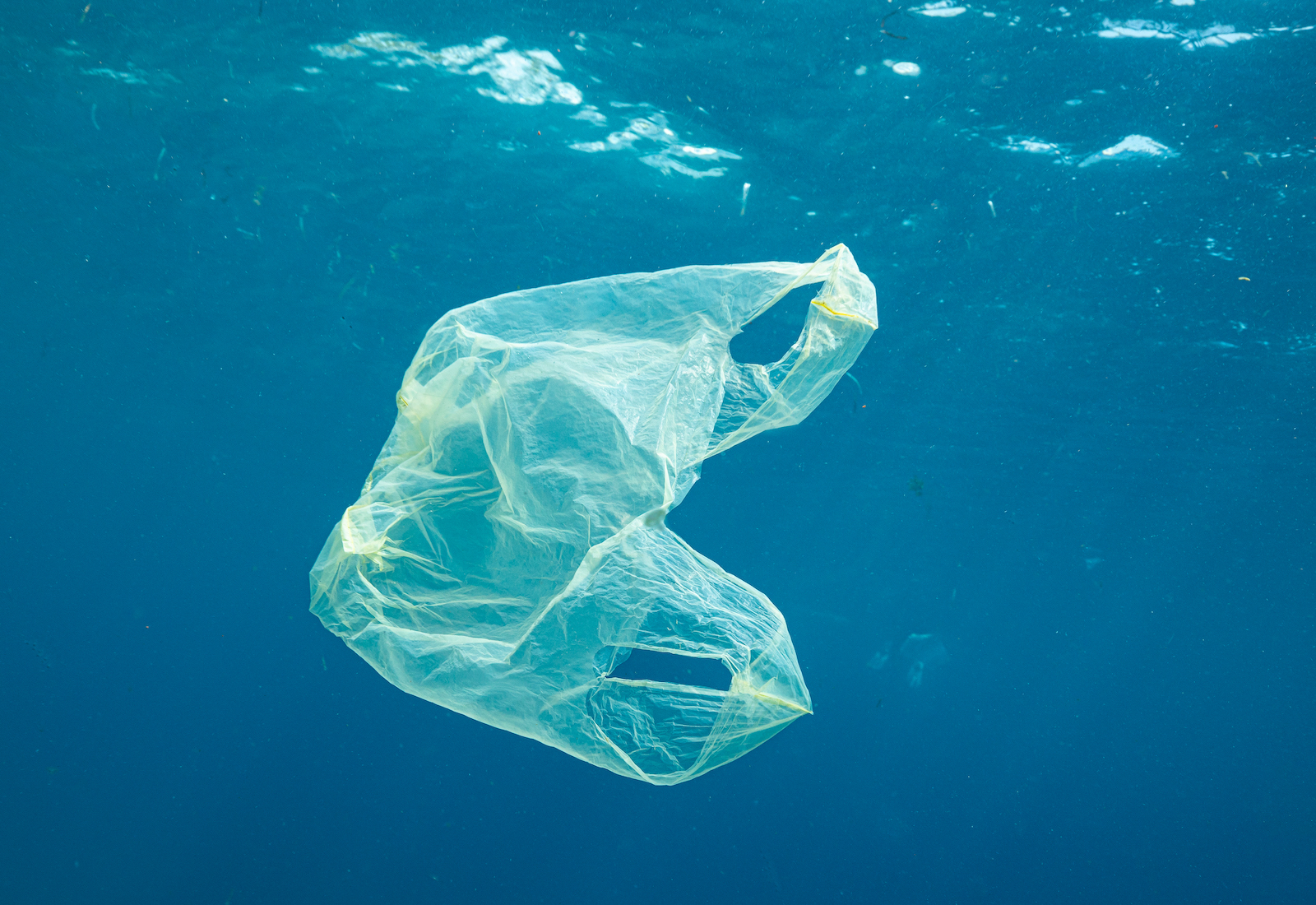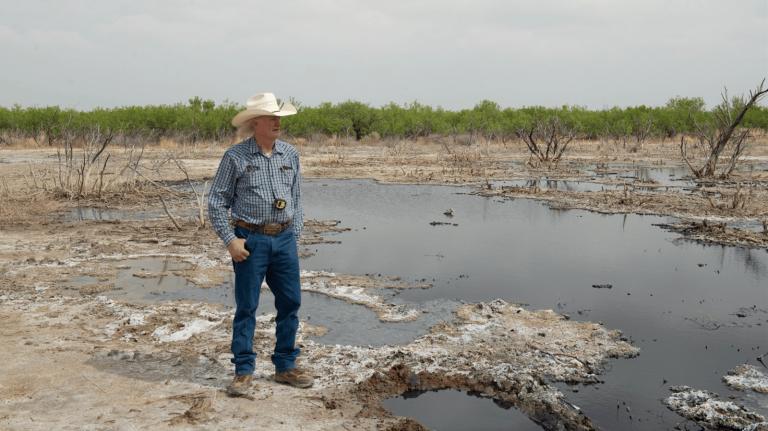As the plastics industry ramps up production, plastic pollution continues to accumulate in the environment at an alarming pace. Up to 199 million metric tons of plastic is already swirling in the oceans — strangling marine life and leaching toxic chemicals into the food chain — and a study published earlier this year predicts this number could quadruple by midcentury. Meanwhile, plastic — most of which is made out of oil and gas — is also taking a toll on human communities. Production facilities located in majority-Black and low-income communities emit hazardous air pollution, contributing to wildly elevated rates of cancer and respiratory disease.
Much of the problem is driven by unnecessary single-use plastics — products like plastic bags and utensils that are designed to be thrown away after only a few minutes of use. One estimate from 2018 found that single-use plastics accounted for between 60 and 95 percent of the planet’s marine plastic pollution.
Given the scale of the problem and its increasing urgency, it seems only natural that the U.S. government is considering a straightforward step toward a solution: Stop buying single-use plastics.
Between July and late September, the General Services Administration, a federal agency that provides administrative support to other government agencies, sought public comment on a proposal to restrict federal procurement of single-use plastic items. “With single-use plastics being a significant contributor to the global plastic pollution concern,” the General Services Administration, or GSA, explained, “it is a logical step for the agency to examine this.”
But petrochemical industry trade groups have vociferously opposed the proposal. The Plastics Industry Association launched a whole new “awareness campaign” in response to what it said would be a costly and environmentally damaging regulation. Another plastic industry group, the American Chemistry Council, inveighed against the proposal with a 23-page public comment.
Both groups made similar arguments, trotting out talking points they frequently use in the face of proposed legislation to cut back on single-use plastics. Contrary to popular belief, they said, plastic is actually the most environmentally friendly option compared to alternative packaging materials such as aluminum and glass. Banning federal procurement of single-use plastics would only lead to higher greenhouse gas emissions, more landfilled materials, and higher costs to taxpayers.
Experts dispute these claims, however, saying they are either outright false or that they rely on selective data interpretations that are meant to make single-use plastics look good while downplaying the full spectrum of their environmental impacts. The industry’s arguments are based on so-called “life cycle analyses,” or LCAs — a method used to determine all of the environmental impacts associated with something’s production, use, and disposal. While these assessments can be useful, they have frequently been “misused” by the industry to place disproportionate weight on factors like transportation-related greenhouse gas emissions — which make plastic look good because it’s lightweight — and less emphasis on considerations like chemical pollution, an area where chemicals perform poorly. Other factors may be too difficult to quantify and so are omitted altogether, like the number of marine animals that are strangled by plastic litter every year.
Elizabeth Balkan, North America director for the international nonprofit Reloop, said that life cycle analyses can allow interest groups to simply craft the story they want to tell — by “picking and choosing data and assumptions and crafting a methodology based on specific, target outcomes.”

At the heart of the American Chemistry Council and Plastics Industry Association’s claims to sustainability are LCAs suggesting that single-use plastics are less carbon-intensive than items made from alternative materials. To take the example of a beverage container, the analyses they cite find that a single plastic water bottle causes fewer greenhouse gas emissions over its lifetime than an aluminum can or glass bottle. This is because it generally takes more energy to melt, mold, and transport thicker and heavier glass and aluminum.
Although the plastics industry commissioned several of these LCAs, and although they contain notable omissions — they neglect, for example, to acknowledge the 36 million tons of greenhouse gas emissions caused by fracking for the plastics industry every year — Balkan said they at least have “some merit”; their findings have been replicated in numerous other independent studies. However, an LCA’s outputs are only as useful as the questions they attempt to answer. Why not compare single-use plastics to reusable alternatives, Balkan asked? Why assume that all plastics must be replaced, rather than modeling a scenario with dramatically scaled-down demand for packaging and disposable foodware?
John Hocevar, oceans campaign manager for the nonprofit Greenpeace USA, also said it was inappropriate to highlight greenhouse gas emissions to the exclusion of plastic’s many other devastating consequences to public health and the environment — from marine litter and toxic chemicals that leach out of plastics to hazardous air pollution from waste incineration.
“If something makes sense from a climate perspective but is going to disrupt entire ecosystems, cause extinctions, and cause death or serious health problems for large numbers of people,” he said, “it would be ridiculous to claim it is an environmentally friendly choice.”
Some of the plastic industry’s other claims fall flat as well. For example, the trade groups lean heavily on the promise of recycling — one of the LCAs they cite says we can “recycle our way out of this problem” — even though the U.S. plastic recycling rate has never risen above 10 percent and advocates say it is unlikely to ever work on a meaningful scale. And to back up the ACC’s assertion that single-use plastics prevent more material from heading to the landfill, the group cites a 2016 LCA saying that it takes four tons of “alternative materials” to replace one ton of plastic. But this number is misleading; it represents the amount of alternative materials that would be needed to replace not only single-use plastics, but also plastic in things like cars, furniture, medical products, and “durable household goods” — a scope far broader than what the GSA covers in its proposal.
Furthermore, more waste does not automatically mean more environmental damage, since some types of waste are less damaging than others. Yet the plastics industry implies the opposite by pairing the findings of the 2016 LCA with those of a separate analysis, this one looking at a single-use plastic reduction policy in Canada. That analysis, written by a conservative-libertarian think tank called the Fraser Institute, says that a Canadian single-use plastics ban will cause a spike in other kinds of waste and lead to “increased environmental damage.”

This is in direct opposition to what the Canadian government’s own reports say. In a regulatory impact statement published at the end of last year, the country’s health and environment departments estimated that its ban on the manufacturing and sale of six kinds of single-use plastics, which was announced this summer and will be fully implemented by the end of 2023, would create roughly 298,000 metric tons of additional waste from replacement materials within the first year of implementation. But this increase waste “would represent inherently less risk to the environment” than single-use plastics, as it would be comprised almost entirely of paper substitutes — which, unlike plastic, are widely recycled and compostable — as well as smaller quantities of biodegradable wood and molded fiber, a paper-based packaging material. While the policy is set to create some new plastic waste from non-single-use items — about 21,500 metric tons — this will be more than offset by the elimination of some 132,000 metric tons of single-use plastic waste.
To Madhavi Venkatesan, an economics professor at Northeastern University in Boston, this is just another example of the plastics industry handpicking arguments that align with its interests, even if those arguments are not backed by robust evidence. “It borders on unethical,” she told Grist. Yet another example is the claim that restricting single-use plastics would cause a jump in food waste, which the ACC supports in its comment to the GSA by citing brochures from U.S. and U.K. packaging industry associations. One of these documents says that cucumbers wrapped in plastic last longer than those that are bare, and another says plastic wrapping can extend meat’s shelf life by two to 21 days.
Balkan objected to this argument: Just because plastic can extend a cucumber’s shelf life doesn’t mean that it’s needed to address food waste, a problem that is largely driven by consumer behavior — how much food people buy, cook, and serve — as well as agricultural practices. She called it an “inaccurate and deceitful attempt” to coopt an urgent environmental issue.
Again, Balkan and Venkatesan highlighted the need for a full reckoning with plastic’s impacts: If it solves one environmental problem by creating another — like reducing food waste but exacerbating plastic pollution and all the harms that come with it — then “that’s not a real solution,” Venkatesan said. The same goes for many of the plastic industry’s arguments in defense of plastic: Even if they are true — and several appear not to be — they should only be evaluated within the full context of plastic’s burden to people and the planet, from its production to its use and disposal.
Neither the American Chemistry Council nor the Plastics Industry Association responded to Grist’s request for comment.
In their own public comments to the GSA, environmental advocates say that such a holistic analysis will only support one conclusion: that single-use plastics must be eliminated. “Single use plastic is impacting our health, is creating serious environmental justice concerns, and is a significant contributor to the global plastic pollution crisis,” said one comment written by Safer States, a national alliance of environmental health organizations.
“We urge the GSA to move quickly to develop and enact bold rules that will drastically reduce and ultimately eliminate federal procurement of single use plastics and prompt movement toward truly safe and sustainable products and systems.”
Editor’s note: Greenpeace is an advertiser with Grist. Advertisers have no role in Grist’s editorial decisions.




